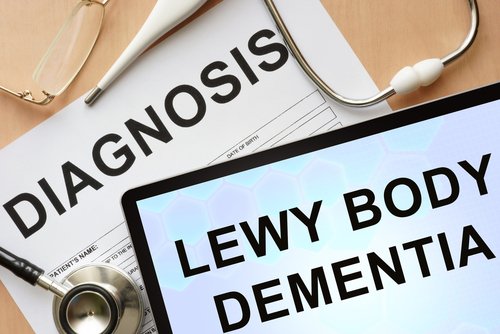New Guidelines Should Help Doctors Do a Better Job of Diagnosing Lewy Body Dementia
Written by |

The advances scientists have made in identifying dementia symptoms include the hallmarks of Lewy body dementia, the third most prevalent kind behind Alzheimer’s and vascular dementia.
Scientists have also discovered biomarkers for diagnosing the disease, including the presence of the protein aggregates known as Lewy bodies that give the condition its name.
The breakthroughs have led to new guidelines for diagnosing Lewy body dementia, or DLB. They are aiming at helping healthcare professionals diagnose DLB with more confidence, even in early stages of the disease when there are few symptoms.
A key challenge of Lewy body dementia is diagnosing it. Struggling with a diagnosis makes it difficult for doctor, patient and patient’s family alike.
The new guidelines are spelled out in an article titled “Diagnosis and management of dementia with Lewy bodies Fourth consensus report of the DLB Consortium” in the journal Neurology.
Professor Ian McKeith of Newcastle University in England led the guideline-rewriting effort, which included a number of experts in the field. McKeith is also a member of the Lewy Body Dementia Association’s Scientific Advisory Council.
“There is now a consensus amongst experts on DLB that certain symptoms, specifically REM sleep behavior disorder, and tests results, formal sleep study, and brain and cardiac imaging, are highly predictive for the presence of Lewy bodies in the brain,” Jim Leverenz, the chair of the association’s Scientific Advisory Council, said in a press release. “For this reason, the consensus criteria have been updated to include these findings and now provide important guidance to clinicians trying to diagnose DLB.”
Patients are often unable to obtain an early DLB diagnosis because its symptoms are shared with Alzheimer’s disease, Parkinson’s disease and other neurological conditions.
There are small differences among them that can be essential for an accurate diagnosis. In contrast with Alzheimer’s patients, those with early DLB may not display impaired memory.
DLB can affect other cognitive skills, however. The manifestations including an ability to pay attention, difficulty with reasoning or solving problems, and even an inability to relate objects in three-dimensional space.
The new guidelines say that the starting point for a DLB diagnosis is dementia symptoms. In addition, doctors need to look for visual hallucinations, uncontrolled movements similar to Parkinson’s, or patients physically acting out dreams during sleep, a condition known as REM sleep behavior disorder.
In addition to looking for key symptoms, the guidelines note that doctors can use tests to detect DLB. One is a brain scan to check for brain structural changes. Another is an MIBG myocardial scintigraphy test, which detects reduced communication between cardiac nerves. Another is sleep studies that can confirm if a person has REM sleep behavior disorder.
The updated symptom and testing guidelines can help doctors come up with an early diagnosis that leads to better treatments and management of the disease.
“It is hoped that these new criteria will allow clinicians to diagnose DLB earlier in the disease and thus improve treatment and management for this devastating disease,” Leverenz said.





